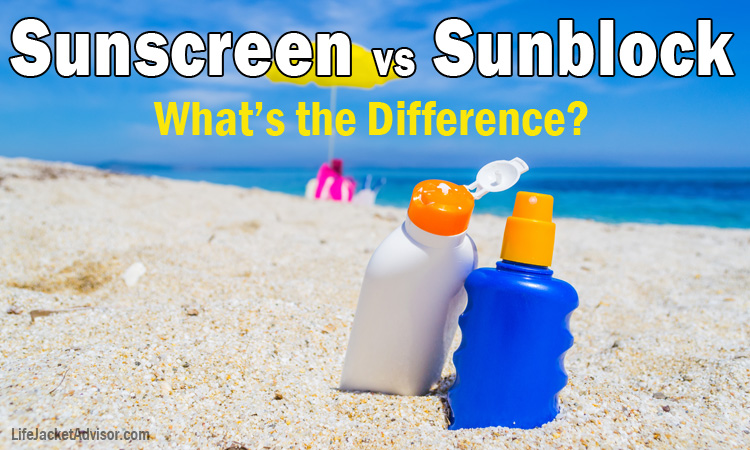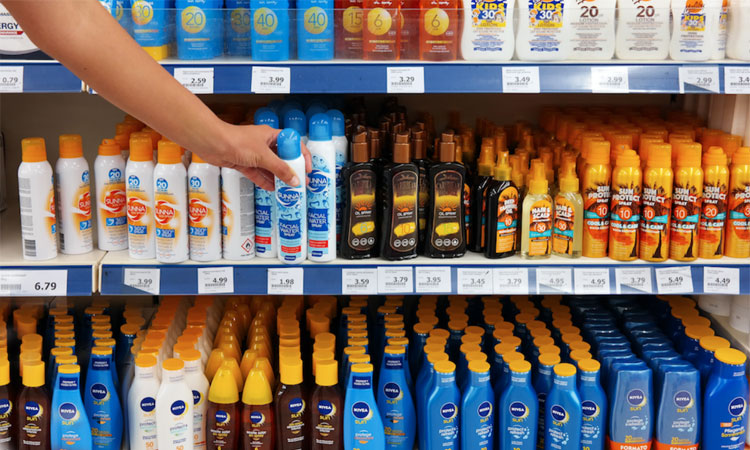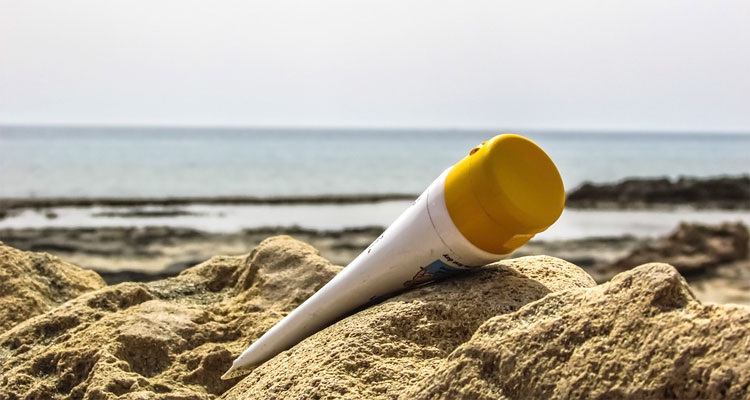
By now, we all know how important it is to wear sun protection anytime we’re outdoors, even for day to day activities. And, when you’re swimming or sweating, you also need to reapply at least every two hours for adequate protection from the sun’s damaging rays.
But there are so many options when it comes to sun protectants, how do you know which is best? In this article, we’ll explain the difference between sunscreen vs sunblock and help you decide which is better for your situation.
Table of Contents
Understanding SPF, UVA, and UVB

Understanding SPF and UV protection is the first step to choosing the right sun protectant. Although the SPF number on a label does measure the product’s strength to shield against the sun, there’s more to it than that.
The Sun Protection Factor, or SPF, of a sun protectant indicates the estimated maximum amount of ultra-violet radiation it can protect your skin from the sun.
To find out how long a product will protect you from the sun, multiply the number of minutes you can normally be in the sun without your skin turning pink by the SPF number on the product. The number you get indicates how many minutes of protection you will get from that product.
- For example, let’s say your skin usually starts to get pink after 10 minutes in the sun and your sun protectant has an SPF of 15: 10 x 15= 150 minutes of sun protection.
The best sunscreen will provide both UVA and UVB protection. This is important because UVA protection means the product will protect your skin from premature aging and sun damage. UVB protection indicates that it will protect from sunburn.
Sunscreen vs Sunblock: How They Differ
Here are the differences and similarities between sunscreen and sunblock to help you can make an informed decision about which one is best.
Chemical vs Physical Sun Protection

You can find both sunscreen and sunblock products in stick, gel, cream, lotion, and spray-on formulas. Both offer forms of sun protection to help you avoid a sunburn. The main difference between sunscreen vs sunblock comes down to how they block the sun’s damaging rays.
Sunblock actually blocks the harmful UV rays by forming a physical barrier between your skin and the sun. On the other hand, a sunscreen absorbs the rays before they can do any damage.
Technically, a sunscreen product can be either a chemical or physical protectant, while sunblock is always a physical barrier.
In the case of a chemical sunscreen, the chemical absorbs the damaging UVA rays. Once it has been absorbed into the skin, it basically becomes invisible. However, chemical sunscreens break down over time when exposed to sunlight, so they must be reapplied at least every two hours to ensure adequate sun protection.
On the other hand, a physical sunblock is usually opaque, so it can leave a white cast on the skin even after it’s rubbed in. They actually provide a barrier that reflects and scatters the sun’s rays away from your skin.
Physical sunblocks don’t break down, so they protect longer without reapplying unless they are washed off.
The main active ingredient in a chemical suntan lotion is usually something like ecamsule, octocrylene, octyl methoxycinnamate, or octyl salicylate. Physical sunblocks usually have titanium dioxide or zinc oxide as the main ingredient.
The Right Level of Sun Protection

The main reason that sunblocks are thicker than chemical sunscreens is that they are made to protect against the UVB rays that cause sunburn. Sunscreens generally protect against UVA rays that cause wrinkles and hyperpigmentation.
However, there are also many products on the market that protect against both types of rays, and they are labeled as “full-spectrum” protection.
Obviously, the best sunscreen or sunblock should offer broad-spectrum protection, but you also need to think about the SPF factor based on the formula listed above. Most dermatologists recommend an SPF of 30 or higher to block as much as 97% of the sun’s damaging rays. No product can block them 100%.
Related: Best Waterproof Sunscreens For the Whole Family
Application Methods
There are also some differences in the application methods of sunscreen vs sunblock. Because sunblock creates a physical barrier between your skin and the sun, it begins to work right away.
You should focus on an even application because any areas you miss will be exposed to sun damage. Don’t expect the product to absorb into your skin because it actually needs to stay on the surface in order to do its job.
On the other hand, chemical sunscreens must be absorbed into the skin to do their job. They need to be applied at least 30 minutes before you go outside to give them time to penetrate the skin. As we already mentioned, they should be reapplied every two hours.
Final Thoughts
When deciding between sunscreen vs sunblock, consider your skin tone and personal habits. If you have fair skin that burns easily, go for a broad-spectrum SPF 30 sunblock.
If you want something that will be virtually invisible and you don’t mind reapplying, a broad-spectrum sunscreen is a great choice.
Either way, be sure to choose a waterproof product if you will be swimming or sweating a lot. And finally, the most important thing is to be consistent and use sun protection every single day!


